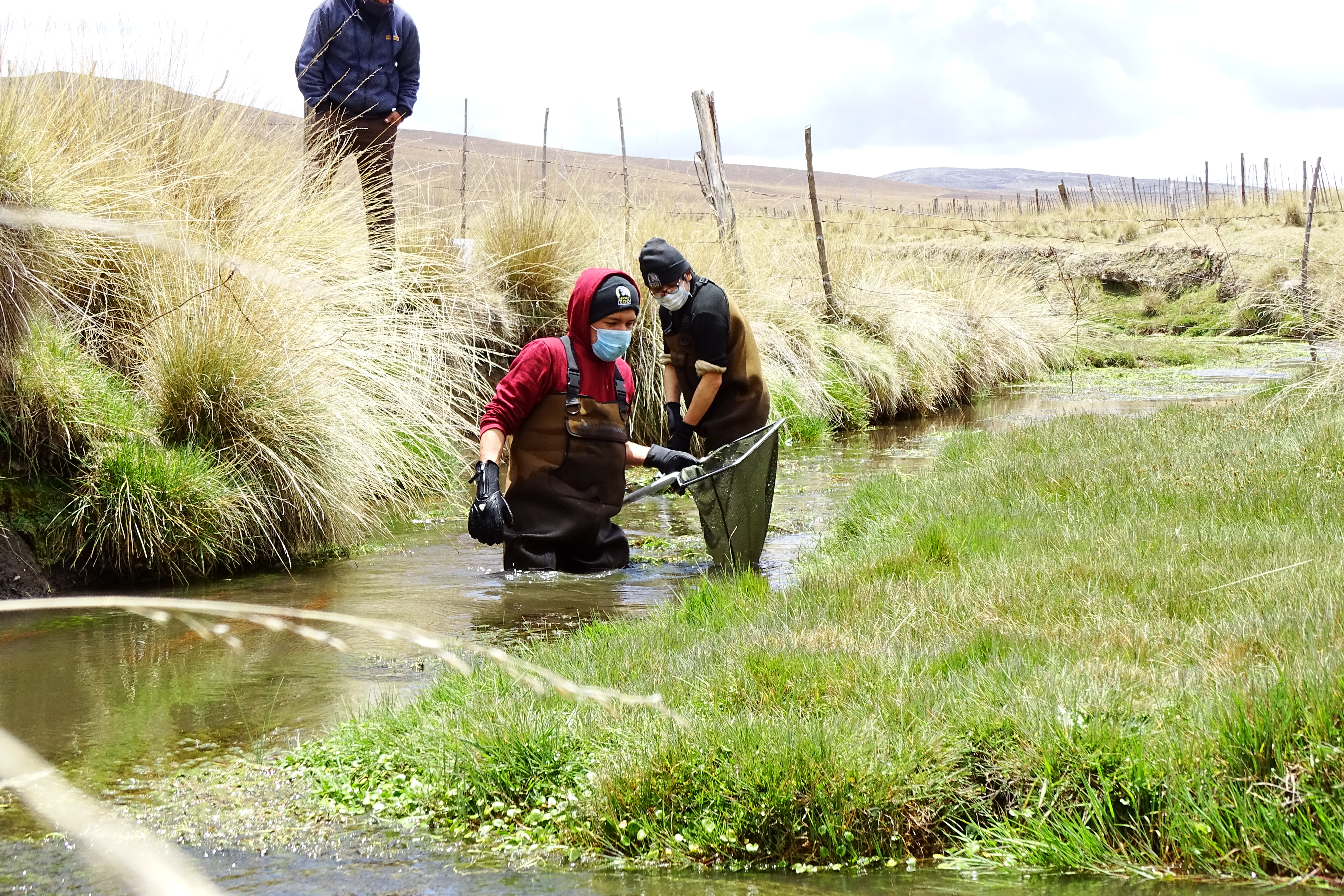The world is going through difficult times due to the COVID-19 pandemic (WWF, 2020). Many people have been affected in their health and economy; businesses and NGOs have stopped their activities and reduced their budgets among other things (Smith-Bingham & Harlharan, 2020; Crothers, 2020). However, solidarity among people and institutions has allowed activities to be progressively reactivated, though following rigorous biosecurity measures.
In this way, ASA partner Grupo RANA participated in a project for the monitoring and surveillance of populations of the Lake Junín Giant Frog (Telmatobius macrostomus) and the Junín ‘Wanchas’ (Telmatobius brachydactylus) in three protected natural areas (Junín National Reserve, Historic Sanctuary of Chacamarca and Huayllay National Sanctuary). These activities were led by the Denver Zoological Foundation and funded by the National Geographic Society and followed the biosecurity measures recommended by the Ministry of Health of Peru (D.S. Nº 157-2020-PCM, 2020), the National Forest and Wildlife Service (SERFOR, 2020) and the National Service of Natural Areas Protected by the State (SERNANP).
The field work took place between October 16 and 24, 2020. The group dedicated to the study of the frog populations was led by Luis Castillo Roque, assisted by Henry Tinoco Vega and Rogger Angel Moreno Lino, while the group dedicated to the study of water quality using benthic macroinvertebrates was led by Manuel Silva Poma and assisted by Pablo Miñano Lecaros. The park rangers Winy Arias López, Eduardo Ruiz and Duane Martínez supported the activities.
As part of the preliminary results, we report three adults of the Junín ‘Wanchas’ found in two localities and five adults of the Lake Junín Giant Frog found in three localities. We also found tadpoles of both species in 9 of the 12 localities evaluated. A frog was found dead from unknown causes, which will be examined at the Wildlife Laboratory of the Universidad Peruana Cayetano Heredia.
The number of adult individuals has been stable since 2015. In addition, thanks to a casual observation by residents of the ‘Parcialidad de Huarmipuquio’ Farming Community (CCPH), the presence of six adult frogs was recorded around 500 meters from our monitoring point at the south of the Junín National Reserve.
It should be noted that the CCPH is an organization of local dwellers who have been working with us in promoting the conservation of the Lake Junín Giant Frog in the project “Guardians of the Chinchaycocha Frogs” funded by the Amphibian Survival Alliance, so that soon we will have more news on how the local communities provide scientific information to specialists.
By Rogger Angel Moreno Lino, Luis Castillo Roque and Roberto Elias Piperis. Grupo RANA (Peru) and Denver Zoological Foundation (U.S.)

